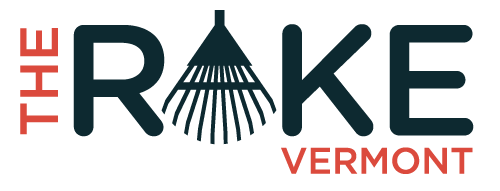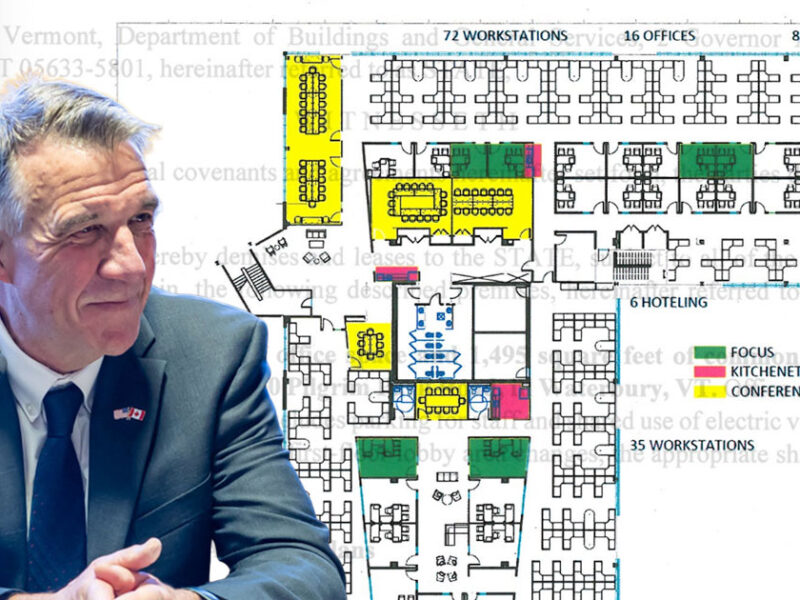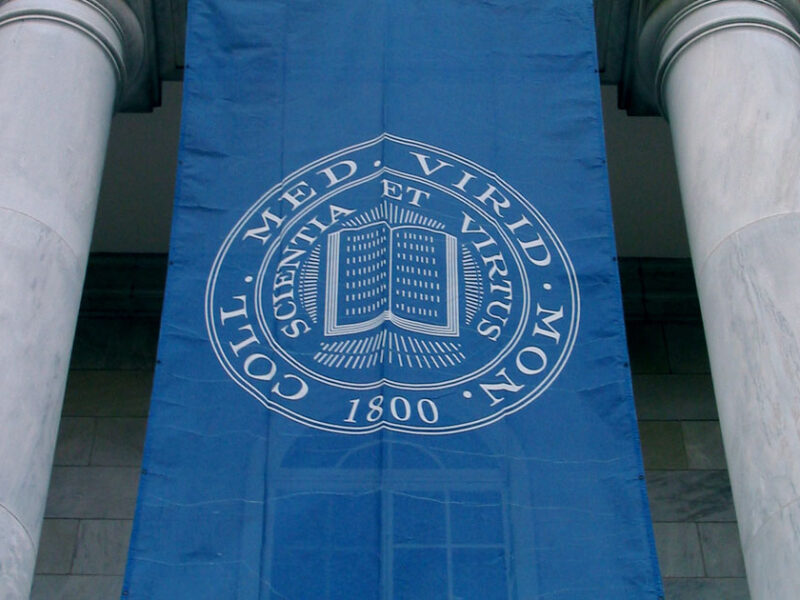A year and a half ago, The Rake published “Please Shop Your Local Hellhole,” in which we highlighted local business owners, property owners, and their advocates constantly decrying business loss with sensationalist public safety concerns while also wanting your shopping dollars. It was clear then that most in the business community failed to reckon with how their constant drumbeat of these concerns to the media has shaped the perception of the city, potentially causing fewer people to visit or go downtown to shop. Instead of introspection on whether this approach did more harm than good, these same business owners have doubled down, repeating the same tired talking points, warranting a sequel piece that, surely this time, they’ll take to heart to break this unhealthy cycle of victimization.
In their latest attempts, which started in May with yet another public safety letter to drum up a media and political attention, we’re told business is down, crime is up, and the city needs more cops as they continue to fashion a rhetorical “public” against all disadvantaged people – this time revealing their long-held disdain for Food Not Cops, a mutual aid organization distributing free food to all comers, tying the group into its crime wave narrative (and getting help from a city councilor who passed off unsubstantiated data about the group’s removal). While these tiring tactics remain effective in garnering sympathy for that narrative, and continue to allow them shirk accountability for the role they played in downtown’s perception among Vermonters, they deflect the other factors at play: landlords and sky-high rents in shaping which businesses can afford to remain open, along with an expanding commercial arts district south of downtown impacting many of the changes downtown, and more specifically, the Church Street Marketplace has faced in recent years.
It would behoove many in the local business class to acknowledge these and a myriad of other contributing factors and broader trends, such as decreased consumer spending, income inequality, high rents, or a downtown simply not built for the average resident, that go beyond public safety and should be discussed just as much, if not more than their hellhole driven narratives.
(Kind Of) Admitting the Messaging Hurt, And Constructing New Sympathy

There is little doubt that most local businesses believe they are the main victim of a society with an almost non-existent social welfare system, and use the public safety narrative to flex political power in Burlington at any opportunity. They’re able to do so as long as they have a captive media willing to parrot their talking points — and they have plenty of outlets eager to play their part. However, within the confines of city commission meetings, there seems to be a sliver of understanding that the constant negativity in their media strategy about downtown’s overall perception has hurt them.
In February 2025, it was noted that the marketplace was facing a revenue shortage due to declining corporate sponsorship. Marketplace Director Kara Alnasrawi (before she was appointed CEDO director) stated in her report that corporate donors had the audacity to donate to social services instead of advertising on the marketplace, the former of which could help address some of the root causes of homelessness, addiction, and mental health struggles.
At Church Street Marketplace Commission meetings since April, there has been discussion about encouraging people to “tell of positive experiences downtown” on sites like Front Porch Forum and Reddit to combat the steady stream of negative posts. Some early results in traditional media include the newly formed “Burlington Better Vibe Coalition,” an informal network of business owners taking out ads in publications or taking part in a “passeggiata” imploring people to dine, shop, and walk downtown. (At The Rake, we encourage “sulkmaxxing.”) There has also been a marked downturn in reactionary news stories that feature and extensively quote business owners uncritically about crime from outlets like WCAX since the summer tourism season began. In the same April meeting, commission chair Mark Bouchett, Homeport owner and key player in “public safety impacting the business” narrative, noted business and foot traffic have been good with warmer weather, a fact he reiterated at a May meeting as well.
While the notion that warmer weather brings more people outside and downtown should be obvious, the other clear challenge to attracting people downtown is construction-related road closures, due in large part to the start of the Main Street portion of the Burlington Great Streets Project. The project uses tax increment financing (TIF), a controversial funding measure that uses public money to spur private development, and aims to create what it calls more walkable, bikeable streets and sidewalks, along with replacing sewer and stormwater management infrastructure that is over one hundred years old. It also appears to cause local businesses, including longstanding venues, to close as a result.
As part of a project that includes the reconnecting of St. Paul Street and Cherry Street, plus the completed new construction of City Hall Park, Great Streets dates back to 2015, touted as a marquee project of former Mayor Miro Weinberger’s administration to increase private investment and development, which infamously included the much maligned City Place project and the creation of “the pit” for many years. The project has been approved twice by voters, once in 2015 to approve the TIF district and again in 2022 to move forward with the Main Street construction and other infrastructure improvements via a bond issue vote.
At no point before the ballots were cast, during the planning phase, or in the numerous community forums regarding the construction, did the business community publicly express concerns to the same media they run to for all other downtown issues for how Great Streets construction would impact downtown businesses, and what the broader impact of a long-term construction project would have on storefronts and venues. All the while, on the financial side, those like former Burlington Development Review Board member Michael Long have publicly highlighted the dubious nature of TIF as a financing method and often went ignored, and State Auditor Doug Hoffer later found ‘substantial mistakes’ in Burlington’s use of TIF under Weinberger in an audit of the city’s TIF districts.
Instead of asking why the business community was not pushing back on timelines, delays, and other impacts to their businesses in the run up to construction, we’re treated to sympathetic profiles of people like Thomas M. Chadwick, the businessman who owns The Gryphon and is soliciting donations from the public to help cover his shortfalls (he’s not the only one doing this). In another classic case of Vermont’s establishment media not Googling their subjects, the article conveniently does not mention that Chadwick was charged with investor fraud in 2023 in both Vermont and New Hampshire and forced to pay out over $6 million in restitution to his victims, to which he still owes $5 million.
Aside from the inevitability of a large undertaking to modernize sewer and stormwater management, the business community likely backed this project in the same way that the average voter did; fancy renderings of a modern, clean, Disneyfied Main Street free of panhandlers and homeless people looks nice, adds more retail frontage and outdoor dining seating to serve their interests, and makes their storefronts look inviting, while appealing to a broader YIMBY, urbanist, gentrifying-loving dream of city planning that garners the seal of approval from tourist publications and content creators who gawk at the sight of designated bike lanes. When the aesthetics look good and give their businesses a boost cosmetically without the use of company funds, it’s not much of a surprise that business owners didn’t think of the drawbacks a large construction project would have.
How are the landlords of these downtown businesses reacting? While some commercial property owners have lamented the construction, many of them are seeing plenty of green in their future. Projects like Great Streets bring higher property values for building owners, who will look to jack up rents of their buildings to extract as much profit as possible from their lessees. This was a key factor in Nectar’s closing, with noted slumlord Joe Handy and the former music venue’s ownership failing to broker a new lease. The rising property values and rents in commercial real estate have predictable downstream effects in the residential market, spurring landlords to hike apartment rents on locals who already face longstanding crises of gentrification and high cost of living.
Now that the construction is here, business owners have made their bed, but now refuse to lie in it. Instead of placing blame on their golden boy mayor who oversaw the project for nearly a decade and kicked off the Main Street portion right before leaving office, they’re blaming Mayor Emma Mulvaney-Stanak for the predictable negative impacts of the construction, crafting new narratives that paint them as innocent suffering victims of a callous municipal infrastructure project.
They got their way, too. After pressure from business owners, the city opened Main Street to two-way traffic on nights and weekends, spending $600,000 of TIF funds to do so and potentially delaying completion of the project.
The Canadians Aren’t Coming and It’s Rue-ining the Burlington Bougie Business Model
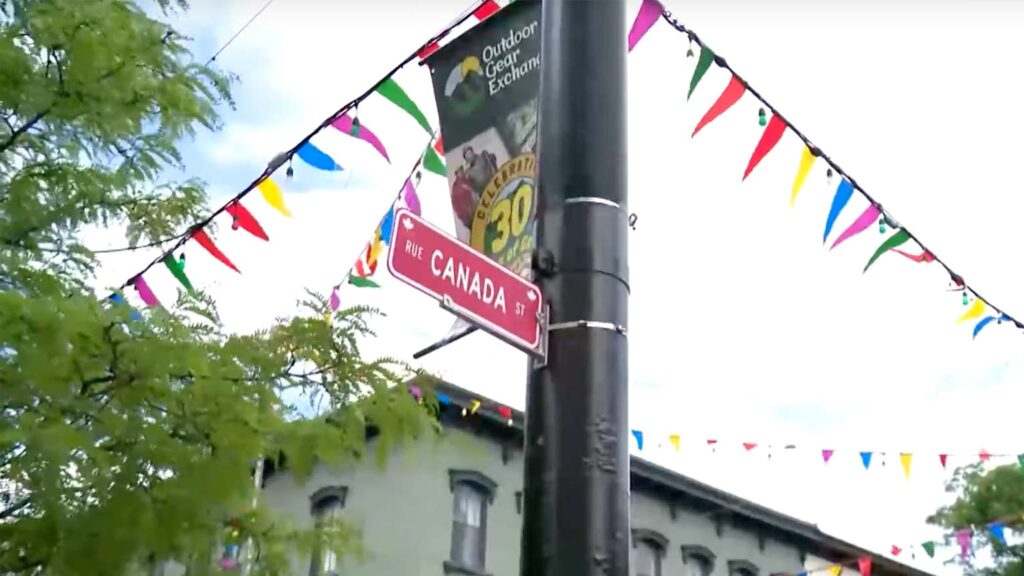
Canadians, mostly Quebecois, have canceled summer vacations or day trips to Vermont due to President Trump’s comments toward Canada, tariffs, and increased aggression by federal officers at border crossings. This is a well-covered topic, with travel to areas around the state down as much as 45%, and has caused much consternation among the business class, as it hits at the heart of their concerns: the loss of tourist dollars, particularly at Church Street dining establishments. In Marketplace Commission meetings, commissioners noted that these tourists are counted on to spend money on food and drink on a nightly basis during their visits.
The efforts to appease our neighbors to the north have gone so far as the Burlington City Council backing performative gestures such as renaming Church Street “Canada Street” (ou Rue Canada) to curry favor with tourists.
“Symbolism is important. It shows that we care,” said City Councilor Becca Brown McKnight regarding the temporary name change. When it comes to appeasing tourists and promoting business and capital, caring is something that can “resonate beyond our borders.” When it is a matter of approving a voter-backed ballot resolution that also resonates beyond our borders while still impacting us locally, council Democrats have sung a decidedly different tune.
The overall panic around the lack of Canadians visiting during peak summer months and for the foreseeable future, while not ideal for the local economy, lays bare some realities about Burlington’s downtown and who it is designed to serve.
It’s not particularly revelatory to say that Vermont has a tourism and service-based economy, and the Church Street Marketplace and downtown area, while appreciated by locals, do not broadly serve their everyday interests. This is especially true in a post-pandemic world, as office work has transitioned to hybrid or remote work, and coworking spaces like Hula flourish in the South End, meaning far less of the 9-to-5 crowd is spending money downtown during the workweek.
Boutique, expensive clothing stores and gift shops make up much of the non-restaurant and bar business downtown (where egg sandwiches are nearing $14). Thanks to the rising costs of just about everything, purchasing designer clothes, upscale kitchen supplies, and $30 “802” t-shirts is cost prohibitive to those Burlington residents who are struggling to manage costs while paying over half of their wages to their landlord.
As spending habits change across the board due to rising costs of living, fewer people are spending money at boutiques and instead finding cheaper alternatives online, turning to thrifting, or having food delivered to them. While people have a variety of reasons to opt for food delivery apps, many would rather entertain themselves within the confines of their living spaces, be it streaming, gaming, or endless phone scrolling, rather than going out for a $15 cocktail, as we’ve broadly become a post-pandemic society of homebodies who can get just about anything brought to their dwellings rather than having to get it themselves at a physical location.
That’s only scratching the surface of other factors that have resulted in consumer behavior changes that the local business community doesn’t want to reckon with earnestly. After all, unique events like the Burlington Festival of Fools, which was chopped thanks to Burlington’s budget woes left from the Weinberger administration, was revived by business owners not simply because they want to see a thriving community with a steady stream of unique and fun happenings in the downtown core, but rather, self interestedly, because it’s “their best weekend of the summer” for business at their storefronts.
The Kids Aren’t Alright (at the Bars Where You’d Expect Them To Be)
Another well-covered topic is that Generation Z (zoomers) go out to bars less often and drink less alcohol than previous generations. Since Gen Z still encompasses college-aged people, this means that students from UVM, Champlain, and St. Michael’s, on average, will not frequent the downtown bar scene at rates previously seen. Universities have also worked to curtail alcohol binging, a trend that will likely continue with Generation Alpha.
That’s not to say young people aren’t aware of the public safety debate in Burlington. How could they not be? Like anywhere else, it’s a topic of conversation on campus, a popular topic for parents of current and prospective students, so much so that the University of Vermont has a “Is Burlington Safe?” page on their website. Using a college-aged student’s favorite tool, ChatGPT, a query of “is Burlington, Vermont safe?” brings up a summary of all the sensationalist local and national media articles that paint the city as a hellhole straight out of the Death Wish movie franchise.
Younger people find their news from influencers and content creators online, who often parrot crime-panic sentiments like “being too scared or inconvenienced by working people and the homeless to take the subway in New York City,” these narratives will bake into their perception that all public places everywhere are unsafe and bad, and serve as a pipeline to right-wing, fascist politics. That is concerning, considering groups like Gen Alpha are much more prone to trust influencers at higher rates. The most popular video for a “Burlington, Vermont” search on YouTube is a right-winger’s “reporting” on the city being a “hellhole” with over 3 million views.
When unsubstantiated, classist, and racist feelings of safety are accepted as fact, thanks to a trove of sensationalizing local and national media articles that circulate through social media, internet searches, and inaccurate AI hallucinations, it’s no wonder a generation that is already facing serious issues with its socialization skills chooses to embrace the endless scrolling loop than touching grass. For a college town, we should be showing students that it is good to get out of their comfort zone, grow as individuals, and enjoy a fun city and state that is still very safe.
As we reckon with lower drinking and public socializing rates for kids who grew up amid Covid, there’s another reckoning we ought to face: public health has turned on Vermont’s prolific drinking culture. Once championed as an economic boon with craft breweries and taprooms popping up across the state, in the last few years, the state has acknowledged it has a drinking problem.
Coupled with the substantial increase in use of cannabis over alcohol, you’ll find that many Vermonters are deciding to cut back, get sober (or at least California sober), and head to recovery. That means less time and money spent in Burlington’s downtown, where often the only form of entertainment after 8:00 pm is at bars. Yet the business and media class can’t help but conflate less patronage of their establishments with public safety, as if it is the only or biggest factor killing Burlington’s nightlife.
Where the drinking crowd goes has also changed. It is no longer confined to the downtown core. As Pine Street has seen redevelopment and gentrification after a focus on the arts in recent years, it now sports multiple new breweries and drinking establishments with far more convenient parking options for suburbanites. Millennials are spending less time at their old college haunts and are looking for family-friendly establishments during daytime hours.
If you’re not drinking or shopping, what else is there to do downtown? The homogenization of Church Street has resulted in a lack of unique places to go and enjoy affordable art and music, and a loss of niche scenes. The death of nightlife and 24-hour spaces across America, with stores and places to eat or hang out reducing hours and treating the very idea of being out at night as criminal, has not spared Vermont.
The local music scene is one such example. As Nectar’s shuts down, it only exacerbates the lack of venues, and underscores a larger issue with the Burlington scene, highlighted by Chris Farnsworth of Seven Days: the city suffers from a lack of musical diversity (read: not jam bands). The shrinking number of music venues has not helped the downtown economy either, even as some attempt to fill the void. 242 Main, a longstanding all-ages punk and hardcore venue, one of the few late-night places for teens downtown, has been shuttered since the condemning of Memorial Auditorium, itself emblematic of not only a city the size of Burlington failing to restore and revitalize a music, concert and indoor community space but also the desire of neoliberal policy to push public-private partnerships instead of taking responsibility for a municipal asset. The District (formerly ArtsRiot) closed after less than a month, with local musicians criticizing the latest iteration owned by out-of-state investors with no skin in the game, which predicated much of the business model on serving overpriced food and drink way out of the average Burlington resident’s price range.
It’s hard to call Burlington a place where the arts and entertainment can thrive, not only when every artist has to work two jobs to afford rent, but also because there is a lack of diversity of artistic tastes and musical genres, or who can and cannot get booked to perform. To make matters worse for the arts, Burlington is (until this fall) without a movie theater, thanks to Roxy Cinema’s owner, Merril Jarvis, choosing not to adjust to the changing dynamics of the film industry and movie-going experience and embrace more community-based experience, instead using public safety and unhoused people as an excuse to close the venue. Jarvis is attempting to sell the property with the stipulation that the next owner cannot open a movie theater, so it will likely sit abandoned.
Abandoned Buildings? In Burlington?
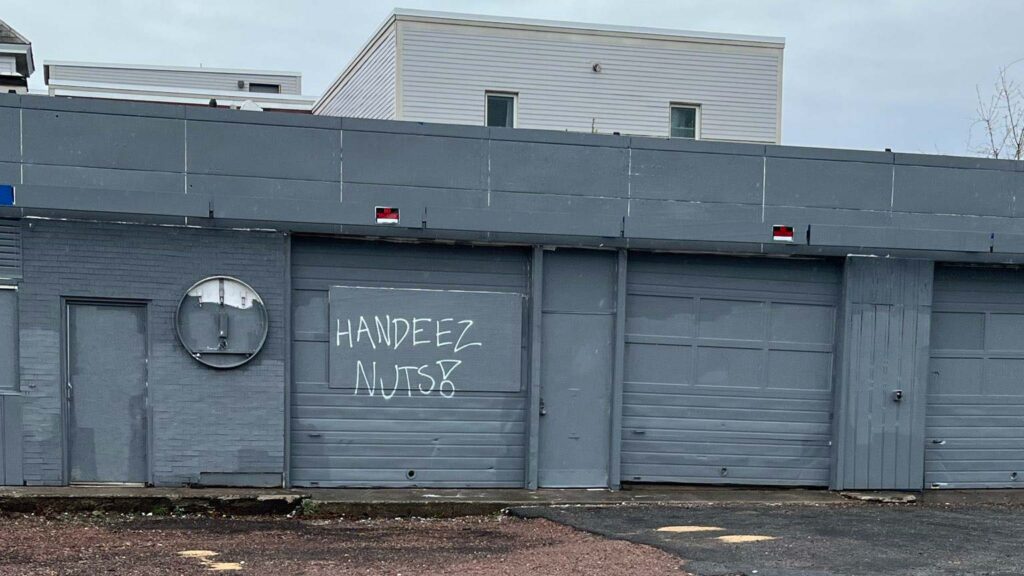
Take a walk around downtown and you’ll see multiple shuttered buildings. The aforementioned Roxy Cinema, along with the former Bove’s restaurant, a former gas station on Pearl Street owned by the Handy family, Memorial Auditorium, the former Vermont Department of Health building, a former Walgreens, and the Immaculate Conception Cathedral, all sit abandoned or are being demolished.
While recent housing construction, adding what surely will not be affordable for the average Burlington resident, has begun at the site of the former YMCA building (headed by a company that has used prison labor in the past), it, like many of these buildings, has or will sit in a development hell. The reasons vary by project, like CityPlace’s well-documented finance blunders, or unsafe working conditions resulting in the closure of downtown’s Walgreens, to crumbling state office buildings being relocated post-Covid, or slumlords letting their properties decay through neglect and non-compliance with city code.
These abandoned buildings draw the ire of the downtown hellhole crowd for being eyesores with graffiti and fencing to keep people out, contributing to their increased sense of “disorder” downtown. Instead of blaming the unhoused, complaints should be addressed to the unaccountable residential and commercial landlords who would rather sit on an empty but appreciating asset than invest their own money into creating buildings and facilities the community can use. These abandoned buildings aren’t the result of a community in decline: they are the result of property owners who have been given a free hand to extract as much as they can.
Don’t Simp for the Business Owner
There are plenty of factors that could be addressed to help alleviate poverty and homelessness downtown — wages, staffing, runaway rents — but it won’t change the fact that the reactionary and dehumanizing “Burlington is unsafe and dangerous” narrative has so deeply entered the public consciousness. Instead of striving for human connection and a community where everyone’s basic needs are met, locals mimic national Republican and conservative talking points, universalizing personal discomfort and mild inconvenience, putting the onus on “individual responsibility” and not our hollowed-out social services and safety nets, in a city and state that, for those with stable housing at least, is very safe.
To the business community and the hyper-online commentariat, this unhealthy fixation has created many online spaces for dehumanizing and fascist language to flourish. The average Vermont resident has simply accepted this fascist framing, shifted by local and national capitalists over the last 5 years. And, they’ve gotten what they wanted, as the Trump administration has made sweeping changes that criminalize homelessness and cut off harm reduction and treatment options, which will only increase the likelihood of imprisoning those without homes for extended periods of time, and “othering” homeless people and those with substance use disorder through dehumanizing language.
There are things we collectively can do that would make our community better, safer, and equitable for everyone. For starters, leading with compassion and empathy can go a long way in a world where these traits are considered weakness not just by the far-right, but also a growing portion of liberals who no longer want to tolerate societal ills that could be treated through the deploying of funds and services to help others, because the sight of the unhoused or the addicted makes them uncomfortable. We can and should be feeding our neighbors, and it doesn’t need to be under the confines of a non-profit that is beholden to donors, a board of directors, and procedure, and we do not need approval from the business community or local politicians to ensure everyone can at minimum get a meal without conditions. We should not let our capacity to be compassionate be eroded by those who condemn the actions that help people. We should not accept their cynical view of Burlington as they continue to bow down to the business class.
Business owners are not your friends. You are their customers. Your loyalty is appreciated, but it is not repaid. Business owners are a class with interests that, while there might be some occasional overlap, are looking out for their bottom line and not whether you, a resident, have a better quality of life. They’re not interested in strengthening democracy. The Marketplace Commission, which has had longstanding goals to privatize the marketplace and has been led by anti-public right-of-way advocates, has mentioned “changing the governance” of the Marketplace as recently as last year. This includes the recent ordinance to ban public nudity, which in part seeks to criminalize homeless people being nude, even if it is not lewd in nature.
These business owners are manufacturing consent for a strengthened police and prison system and the privatization of Church Street and the marketplace district. Fascism thrives in privatized, heavily policed environments. That means trespassing citations can be issued, protests can be banned, and a private business organization can decide who can and who cannot frequent what is considered one of the city’s crown jewels, something that should be accessible and enjoyed by all.
To paraphrase an oft-misattributed John Steinbeck quote, more of us should stop thinking of ourselves as temporarily embarrassed millionaires and understand that collectively, we’re working people who should prioritize stable housing, good wages, and social services as the main goals of our local government. Instead, successive Burlington administrations cater to the whims of a class of people—business owners, landlords, and developers—who put the profits over community in a city many of them do not even reside in. If you want to buy their products or drink and dine at their establishments, nothing is stopping you. But it’s time to stop buying their narratives and resist their power over our city.
Matt Moore is a writer from Vermont. He is on the editorial collective of The Rake Vermont.
